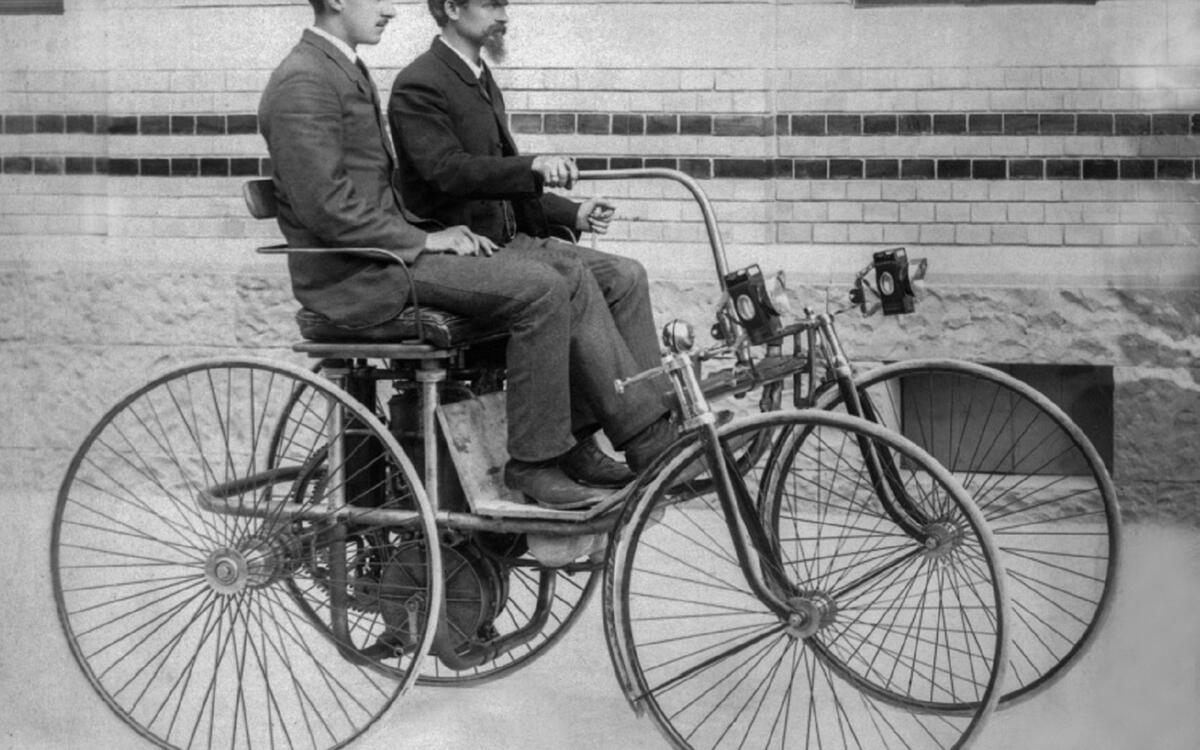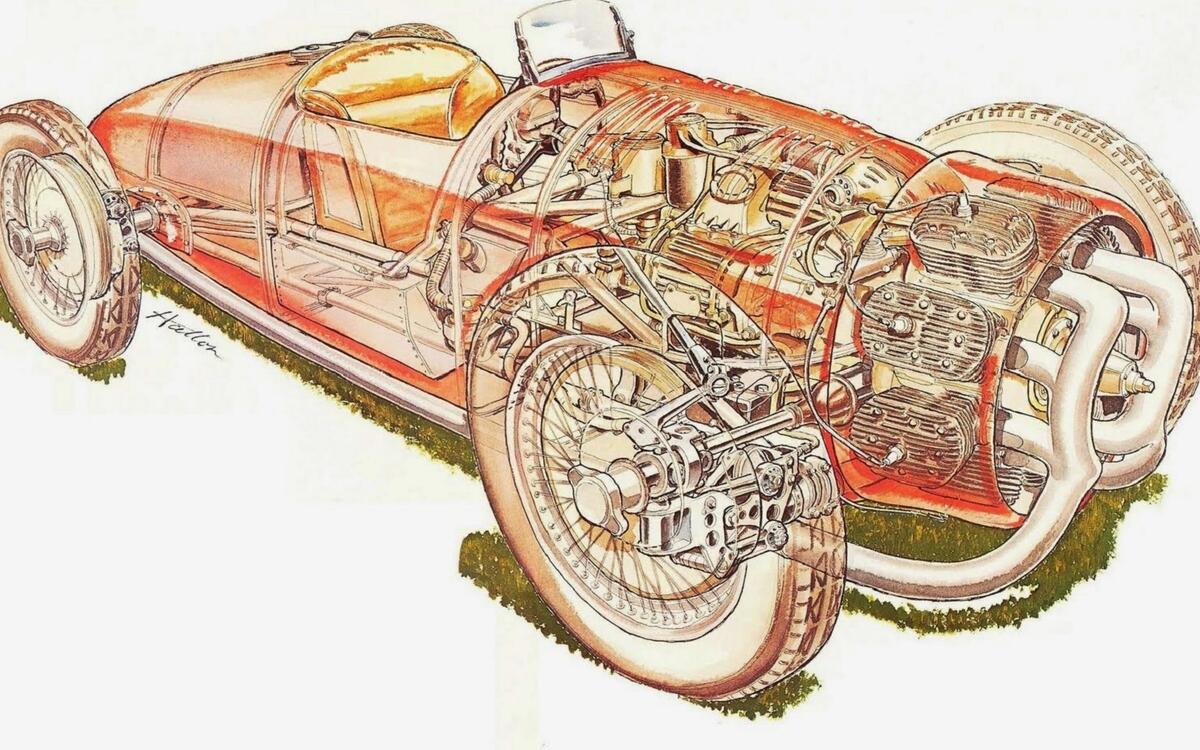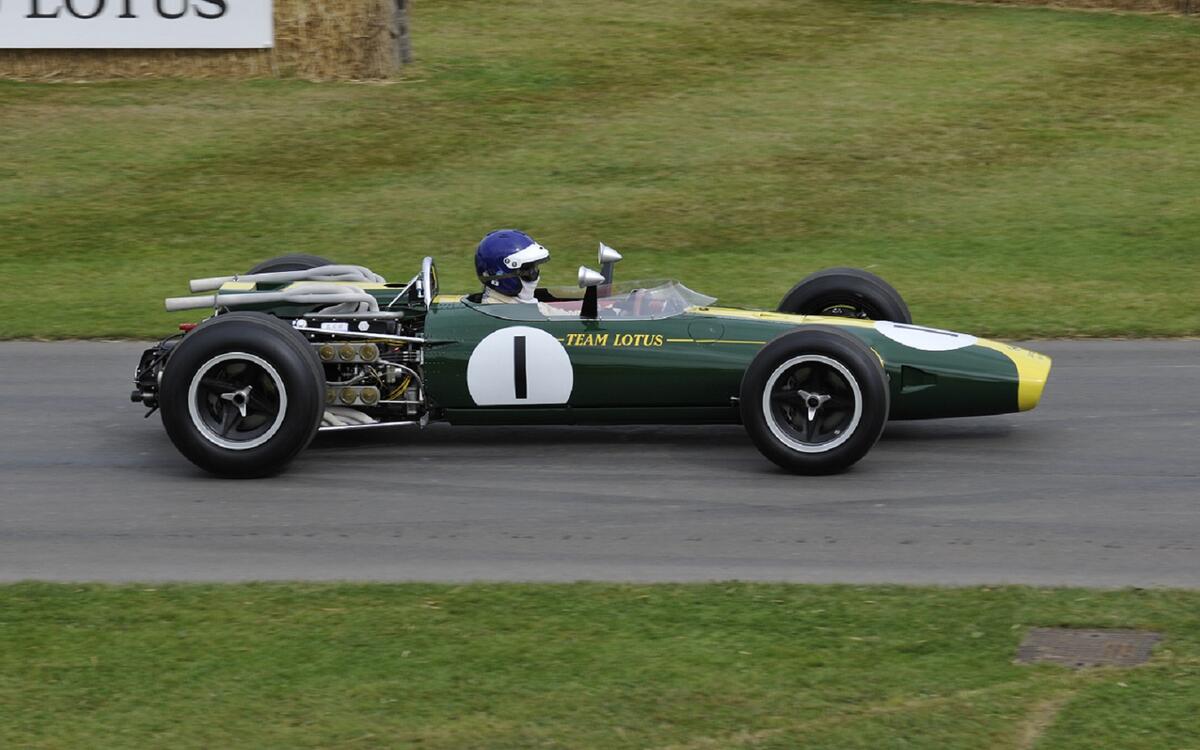 Slide of
Slide of
Some unusual engine designs have gone on to find success in sports cars and even mainstream best-sellers.
Others have ended up following technical blind alleys, but all offer an insight into the engineering thinking required to push car design forward.
Here’s our run-down of unusual engines in order of appearance:
 Slide of
Slide of
Single-cylinder - First used: 1885
The single-cylinder internal combustion engine dates right back to the very first identifiable car, the 1885 Benz Patent-Motorwagen. The 954cc four-stroke motor was mounted underneath the passenger’s bench seat and generated less than 1bhp.
However, it was simple to produce and work on, and it quickly grew in power to 2bhp. Single-cylinder engines have been used ever since in a variety of lightweight and economy cars, and the design is having a renaissance thanks to its suitability as a range-extender unit for electric cars.
 Slide of
Slide of
V-twin - First used: 1889
The V-twin engine offers a number of appealing traits for use in a car. It’s compact, torquey and usually light as most are derived from motorcycle units. The first car to use a V-twin was Daimler’s Stahlradwagen, but the configuration really found favour in the 1920s when companies such as GN and Morgan adopted the design for sporting models.
The only current car using a V-twin engine is still a Morgan with its 3 Wheelers that offers 82bhp from its thumping S&S 2.0-litre motor.
 Slide of
Slide of
V4 - First used: 1897
The V4 has endured a poor reputation over the years, much of it due to the Ford version that wheezed its business under the bonnet of various models during the 1960s and 1970s. Its compact dimensions and inherent smoothness should have made it ideal for use in cars and Émile Mors was an early adopter in 1897.
The largest ever Grand Prix engine was the V4 used in J Walter Christie’s 1907 machine that boasted a capacity of 19,891cc. Lancia made the design its own for classics such as the Appia and Fulvia, while Porsche used a 500bhp V4 in its 919 Le Mans racer to power the rear wheels.
 Slide of
Slide of
Sleeve valve - First used: 1903
First invented by the American Charles Yale Knight, the sleeve valve engine did away with typical ‘poppet’ or ‘mushroom’ valves in favour of a ‘sleeve’ that slides around the piston, this supposedly provided a noiseless engine.
Driven by a geared shaft, the holes in the sleeve align with intake and exhaust ports in the cylinder wall. British car firm Daimler championed Knight’s twin-sleeve invention and refined it before using it in a multitude of its models, as did US truck manufacture Willys. However, the new design was described as fault-prone as the engine struggled to stay fully lubricated - this led to high rates of oil consumption.
A second, more efficient, variation of the sleeve valve engine - named Burt-McCollum after its inventors - came just a few years later and used a single sleeve that was able to reduce the high rates of oil consumption that plagued Knight’s engine.
Adopted by Scottish car makers Argyll and later by Bristol in its radial engines, the sleeve valve eventually died out due to its inability to run at high rpm and improvements in traditional ‘poppet’ valve engines rendered it inefficient and expensive.
 Slide of
Slide of
Straight-eight - First used: 1919
Like so many engines used in early cars, the straight-eight was first developed for aircraft use. The power of eight cylinders coupled to the long, thin aerodynamic shape of this motor made it ideal for planes. It was first adopted for car use by Isotta Fraschini, followed by Leyland Motors in 1920, but it was Bugatti in Europe and Duesenberg in the USA that popularised the design.
Bugatti (pictured) dominated racing with its various lightweight cars, as well as the luxury end of the market, while Duesenberg ran straight-eights at the Indianapolis 500, in Grand Prix events and at the Bonneville Salt Flats.
 Slide of
Slide of
Straight 12 - First used: 1920
The sheer length of a stright-12 engine meant it was only ever destined to be used in luxury cars, which was the case with the French-made Corona. Its 7238cc capacity made it powerful and it was also very smooth, but the cost and impracticality of the design means there’s no record of any cars ever being sold with this motor.
Packard (pictured) took up the challenge later in the 1920s and built one prototype that was used by Packard family member in 1929 until his death when the car was scrapped.
 Slide of
Slide of
W12 - First used: 1927
We may have become accustomed to the W12 layout thanks to Bentley, but the design dates back as far as the 1920s. Back then, Land Speed Record pioneers such as John Cobb and Sir Malcolm Campbell adapted the large capacity Napier Lion aero W12 to set sensational new speed markers, as in this, Campbell’s Blue Bird.
The W12 then lay dormant as an idea until the Life F35 Grand Prix car of 1990, which proved underpowered and unreliable. Audi then picked up the design for its 1991 Avus concept car and this developed into the W12 used in a variety of VW Group models.
 Slide of
Slide of
V16 - First used: 1929
Maserati was first out of the blocks with a V16 engine in its Tipo V4, closely followed by Cord in the USA. Alfa Romeo adopted the layout for its Tipo 162 and its 3.0-litre unit delivered 490bhp, while Auto Union developed its V16 for use in the Type C.
After the Second World War, only BRM (pictured) dabbled with the V16 configuration with its screaming 1.5-litre motor for Grand Prix use. This engine produced 600bhp but problems with its supercharging system meant it was not reliable enough to deliver on its early promise.
 Slide of
Slide of
Radial - First used: 1935
The light weight and simplicity of the radial engine design were not lost on aircraft manufacturers, and it was also used in many tanks. However, size and valve design made it less attractive to car companies, so the first use was in the 1935 Monaco Trossi grand prix machine.
Its air-cooled, two-stroke radial motor was also supercharged and arranged with two rows of eight cylinders. Power was 250bhp, which was not that impressive from a 4.0-litre engine of the period. Overheating proved a problem, but the car failed to compete due to terrible understeer caused by 75% of the car’s weight being over the front axle.
 Slide of
Slide of
Flat-12 - First used: 1946
Porsche kicked off the flat-12 design trend in 1947 when Ferdinand Porsche came up with a 1.5-litre unit for Cisitalia (pictured). It was to be used in the Italian firm’s Grand Prix car but never saw the light of day due to its complexity. So, the world had to wait for Ferrari to pick up the baton in 1964 with its Formula 1 cars, but again it was Porsche who put their mark on the design with the Le Mans-winning 917.
However, Ferrari was first with a flat-12 road car courtesy of its 365 GT4 Berlinetta Boxer, with the second word referring to the engine layout.
 Slide of
Slide of
Gas turbine - First used: 1950
The first use of a gas turbine engine in a car was, perhaps surprisingly, from conservative British carmaker Rover. Jet 1 (pictured) was the result of the UK’s lead in this technology following the Second World War and it was based on the P4 chassis. Acceleration was good for the period, taking 14.0 seconds from 0-60mph, and it could cruise at 90mph. However, 6mpg was less appealing.
Development saw the engine reach 230bhp and top speed climb to 152mph. General Motors and Chrysler both made attempts with the gas turbine engine, and various motorsport campaigns at Le Mans, Indianapolis and Formula 1 failed to progress the idea. However, there are plans to use a gas turbine with range extender hybrids from British firm Delta Motorsport. Perhaps the most notable land vehicle application for gas turbine engines today is in the US Army’s main battle tank, the M1 Abrams.
 Slide of
Slide of
Triple - First used: 1953
The triple is an in-line three-cylinder engine that has been around for much longer than the current crop of compact units like those used by Ford and Volkswagen. The design came to prominence in the 1950s when DKW (pictured) and Saab used two-stroke versions of the design for their small family models.
A measure of how good these engines were is the DKW was to give two-time Formula 1 champion Jim Clark his first racing experience and Saab won the Monte Carlo Rally with a 93. Now, the layout is prized for its small size, efficiency and strong torque characteristics.
 Slide of
Slide of
BRM H16 - First used: 1966
British Racing Motors was nothing if not innovative in its approach to the new 3.0-litre regulations in Formula 1 for 1966. Where others used V8 and V12 motors, BRM came up with the H16, essentially two flat-eight motors laid one on top of the other.
Each had its own crankshaft, which were joined by gears, but this design made it very heavy. It was used in the Lotus 43 (pictured) and driven by Jim Clark to victory at the US Grand Prix at Watkins Glen in ’66. However, that was to be the H16’s only win and it was soon dropped in favour of a V12 design.
 Slide of
Slide of
Rotary engine - First used: 1967
Mazda will be forever linked to the rotary motor. Many of its most memorable models have used this engine design and it’s hard at work with a new sports car based on the RX-Vision Concept.
However, the engine was created by German engineer Felix Wankel, who developed it at NSU before the company did a deal with Mazda. That resulted in the 1967 Cosmo 110S coupe (pictured) and founded a line of sports cars that used the rotary engine’s smooth, high-revving character to great effect.
 Slide of
Slide of
Flat-eight - First used: 1968
The flat-eight has long been favoured in aircraft, but its smoothness is outweighed by the cost of manufacture and that’s why it took until the Porsche 908 for the design to see the light of day. Built for sport car racing, the 3.0-litre unit took advantage of the new Group 6 rules in 1968 that increased maximum engine capacity to 3.0-litres.
It wasn’t a success straight out of the box, but 350bhp was a solid starting point and the 908 found form in 1969, helping Porsche lift the International Championship for Makes for three years in a row from 1969 to 1971.
 Slide of
Slide of
V5 - First used: 1983
Think of the V5 and you’ll most likely come up with the Mk4 Golf and its offshoot models such as the Bora (pictured) and SEAT Toledo. The 2.3-litre motor made its debut in the Passat in 1997 and came with 148bhp as it aimed to bridge the gap between the firm’s in-line four and V6 units.
It met with limited success despite the clever engineering needed to make such a compact unit. Before that, only General Motors had toyed with this layout and decided against putting its diesel design into production.
 Slide of
Slide of
VR6 – First used: 1991
Distinguished from a regular V6 by its narrow angle (15 degrees) and staggered V configuration, Volkswagen’s VR6 engine consisted of two cylinder banks, housed under one cylinder head covering both rows.
First seen as a 2.8-litre unit in the Passat and Corrado producing 172bhp, and later as a 188bhp 2.9, the VR6 was manufactured for the sole purpose of transverse engine instillations in front-wheel drive cars. The decreased angle and staggered configuration allowed the engine to be fitted into vehicles previously sporting 4-cylinder engines and later featured in the Mk3 Golf.
Another factor differentiating the VR6 is its unique sound which is unlike that of inline or V configured engines.
With the ability to use the firing order of a straight six-engine and featuring two overhead camshafts for both 12- and 24-valve variants. The VR6 was notoriously thirsty and the only model to currently use the latest, 3.6-litre 276hp VR6 is the seven-seater Atlas SUV (pictured).
 Slide of
Slide of
W16 - First used: 1995
Bugatti may be most closely associated with the W16 engine in its Veyron and Chiron models, but engineer Ramon Jimenez was first to build a supercar with this configuration (pictured).
The Frenchman spliced together four Yamaha 1000cc motorcycle engines to achieve a W12 with two crankshafts and 80 valves capable of 560bhp.
Bugatti upped that considerably with its 987bhp unit for the Veyron and now makes 1479bhp in the Chiron.
 Slide of
Slide of
W8 - First used: 2001
It may have ended up as a technological blind alley, but Volkswagen’s W8 engine remains an intriguing design. It splices two narrow angle V4 engines on to a common crankshaft, which allows an eight-cylinder engine to occupy the space normally reserved for a V6.
More cylinders give greater power, torque and smoothness and, in the Passat, the 4.0-litre W8 offered 271bhp and 273lb ft. Sales never took off and only around 11,000 W8s were ever built.
We take a look at the strangest powertrains ever to propel a car
Advertisement










































